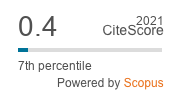Ovicidal and adulticidal effect of acaropathogenic fungi, neem oil and new acaricide molecules on Tetranycus urticae Koch
Keywords:
Bioassay, Tetranychus urticae, fenazaquin 10 EC, spiromesifen 240 SC, diafenthiuron 50 WP, Hirsutella thompsonii, Beauveria bassiana, neem oilAbstract
The relative toxicity of two acaropathogenic fungi (Hirsutella thompsonii and Beauveria bassiana), neem oil and three new acaricide molecules viz., fenazaquin 10 EC, spiromesifen 240 SC and diafenthiuron 50 WP to two-spotted spider mites (egg and adults) were evaluated against a standard check and untreated control under laboratory conditions. 24 hours after treatment, fenazaquin 10 EC excelled in ovicidal activity with a mean egg mortality of 40.81 per cent. The next best treatment was spiromesifen 240 SC which recorded 15.17 per cent egg mortality. Both fenazaquin 10 EC and diafenthiuron 50WP exhibited 100 per cent adult mortality within 24 hours of treatment application. After 72 hours, all the treatments except B. bassiana caused significantly high egg mortality. Neem oil (41.00 per cent) and H. thompsonii (31.98 per cent) emerged as the next best candidates with respect to adult mortality, while spiromesifen 240 SC recorded the lowest adult mortality of 3.40 per cent.
References
Abbott, W. S. (1925) A method of computing the effectiveness of an insecticide. Journal of Economic Entomology 18: 265–267.
Aghajanzadeh, S., Mallik, B. and Chandrashekar, S. C. (2006) Toxicity of Culture Filtrate of Hirsutella thompsonii Fisher Against Citrus Rust Mite, Phyllocoptruta oleivora Ashmead (Acari: Eriophyidae) and Two Spotted Spider Mite, Tetranychus urticae Koch (Acari: Tetranychidae).
International Journal of Agricultural Biology 1560: 276–279.
Copping L. G. and Duke S. O. (2007) Natural products that have been used commercially as crop protection agents – a review. Pest Management Science 63 (6): 524-554.
Gerson U. Kenneth, R. and Muttath, T. I. (1979) Hirsutella thompsonii a fungal pathogen of mites. II. Host-pathogen interactions. Annals of Appied. Bioogy. 91: 29-40.
Ghosh, J., Mukherjee, A. B. and Sarkar, P. K. (1996) Assessment of loss of bhendi against red spider mite. Environment and Ecology 14: 480-481
Marcic. D., Peric. P. and Milenkovic. S. (2011) Pesticides - Formulations, Effects, Fate. In: Pesticides - Formulations, Effects, Fate. Stoytcheva, M.(ed.), Tech Publisher, Europe, 62p.
Nauen, R., Schnorbach, H. J. and Elbert, A. (2005) The biological profile of spiromesifen (Oberon®) – A new tetronic acid insecticide / acaricide. Pflanzenschutz-Nachrichten Bayer 58 (3): 417-440.
Patil R. S. (2005) Investigations on mite pests of solanaceous vegetable with special reference to brinjal. PhD thesis, University of Agricultural Sciences, Dharwad, 135p.
Patil R. S. and Nandihalli B. S. (2007) Preliminary studies on the toxicity of pesticides to eggs and adults of Tetranychus macfarlanei Baker and Pritchard (Acari: Tetranychidae). Insect Environment. 12 (4): 168-169.
Sangeetha, S. and Ramaraju, K. (2013) Relative Toxicity of Fenazaquin aainst two spotted spider mites on okra. International Journal of Vegetable Science 19 (3): 282-293.
Saryazdi G. A. Hejazi M. J. and Amizadeh M. (2013) Lethal and sublethal effects of spiromesifen, spirotetramat and spirodiclofen on Tetranychus urticae Koch (Acari: Tetranychidae). Archives of. Phytopathology and. Plant Protection. 46 (11): 1278-1284.
Sato M. E., De Silva M. Z., Raga A., Cangani K. G., Veronez B. and Nicastro R. L. (2011) Spiromesifen toxicity to the spider mite Tetranychus urticae and selectivity to the predator Neoseiulus californicus. Phytoparasitica 39: 437-445.
Sundaram K. M. S. and Sloane L. (1995) Effects of pure and formulated azadirachtin, a neem,based biopesticide, on the phytophagous spider mite, Tetranychus urticae Koch. Journal ofEnvironmental Sciences and Health 30 (6): 801-814.
Umamahesheswari T., Bharathi C. S., Kanagarajan R., Arivudainamb, S. and Selvenaratanan V. (1999) Neem formulations and castor oil- a safe way to manage okra spider mites. Journal of Acarology 14 (1 & 2): 77-79.
Yanar D., Kadýoglu I. and Gokce A. (2011) Acaricidal effects of different plant parts extracts on two- spotted spider mite (Tetranychus urticae Koch). African Journal of Biotechnology 10 (55): 11745-11750.


